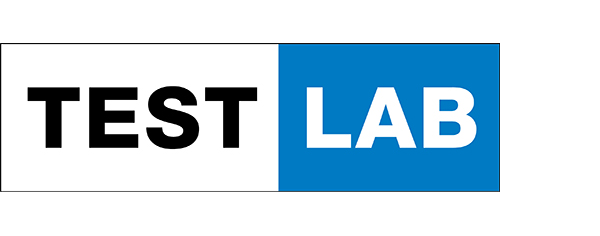VOICE
The quality of mobile voice telephony incorporates 32 percent of our total score. Indeed, telephony nowadays is only one of many smartphone applications – but when it is needed, is has to work.
For a couple of years now, the German mobile networks have supported VoLTE (“Voice over LTE“). Thus, they do not have to switch back to 3G or 2G in order to make a phone call. Instead they transport the voice information contained in data packets via LTE.
The improvements gained with this technology can be clearly seen in the measurement values of our drivetests and walktests: Call setup times in the Telekom and Vodafone networks are on average significantly below 2 seconds.
In the Telefónica/O2 network, the determined average values also stay comfortably short – ranging between 2.2 seconds (walktests in bigger cities) and 2.6 seconds (drivetests in smaller towns).
The measured voice quality is also impressive: Average MOS values between 4.4 and 4.5 mark high-quality connections, which are realized in many cases via the higher bandwidth EVS codec (Enhanced Voice Services).
MultiRAB Connectivity, which we measured for the first time in 2019, states whether a smartphone can hold contact to more than one “Radio Access Bearers“ during telephony – practically handling data communication at the same time. The sucess rates determined for this feature are also overall very good.
Improvements at O2
The operator Telefónica or O2 respectively, which was busy in the last years with the ongoing merging of its formerly own network infrastructure with the one of E-Plus, shows clear signs of progress: In the bigger cities, the operator can almost close the gap to the leading duo Telekom and Vodafone. In smaller towns and on the connecting roads, it still follows at some distance, but was able to improve its results here as well.
DATA
Surfing the Web, conducting uploads and downloads or enjoying video streams – the measurement results from the data discipline incoporate 48 percent of the total score.
This year‘s ranking among the German operators can be clearly read from all data disciplines: Telekom leads, Vodafone follows at some distance, and Telefónica/O2 ranks third, again with some distance behind the second rank. Still, O2 managed to improve in some areas over its results from the previous year. In other areas it at least managed to keep its performance constant.
Telekom leads data discipline
This ranking is also valid for almost all applications – such as surfing the web, conducting downloads and uploads or playing back videos from Youtube.
Especially mobile video playback in difficult scenarios illustrates where there are still deficits: For example, Vodafone only achieves success ratios around 95 percent in the drivetests conducted in the cities – in other words: five percent of video requests stall. In smaller towns, this KPI sinks to 93 percent at Vodafone and to 92 percent at OS. Only Telekom manages to keep it constantly above 98 percent.
The download and upload measurements especially in the cities clearly show that all operators continue to extend the “carrier aggregation“ in their networks. Vodafone and Telefónica/O2 combine up to four LTE carrier frequencies per connection, Telekom currently up to three. Thus, data rates at Telekom and Vodafone raise above 150 Mbps in the
10 percent of the fastest measurements. This may still leave room for improvement, but goes into the right direction.
Connecting roads
Internet connectivity in the car becomes ever more important. What is the state of data connectivity on German roads in the year 2019?
The demands on data connectivity when driving on the roads have considerably risen in recent years – Internet-connected satnav system or streaming apps in on-board infotainment systems boost the expectations and requirements of the users. Traveling between the cities and towns considered in our benchmark (see map on page 4) umlaut‘s therefore captured the quality of data connections on a total of 6,300 kilometres of roads.
Clear ranking on the roads
The results of these measurements confirm the ranking which was already determined in the other data disciplines: Telekom is clearly ahead, Vodafone follows in a good middle position and was able to increase its performance compared to last year. O2 keeps the third rank and basically maintains the level determined in the previous year.
This picture is constant for all investigated categories: We determined the highest success ratios and throughputs in the Telekom network, Vodafone follows at some distance and O2 ranks third with a still larger gap. Drivers looking for powerful mobile connections on the autobahn and on rural roads get on best with Telekom, according to our benchmark results.
Data on Railways
Working on your notebook, tablet or smartphone while travelling via train – or just watching a Youtube video. How well does this actually work today? Our test results are disillusioning.
The long-time problem child of our mobile benchmarks are connections in German long-distance trains. Although this did not essentially change much, our walktest teams still determined some improvements over the results from the previous year. This is quite distinct for voice telephony (see measurement values above on this page), but also for data communications.
Minor improvements, but still much to do
A direct comparison to the connectivity on the roads shows that there is still much need for improvements on the railways. Success ratios of 93 to 88 percent when trying to access a web page or to download a file give a clear indication of what travelers in the trains may expect when using their notebooks, tablets and smartphones – and what they should better not expect. Travelers who would even like to kill time with watching web videos, are bound to succeed with this endeavour only in 60 to 80 percent of the cases.
All lamenting aside, we still would like to acknowledge that the results and degrees of fulfillment went up for all three candidates compared to last year. We hope this trend continues for the customers of German railways.









